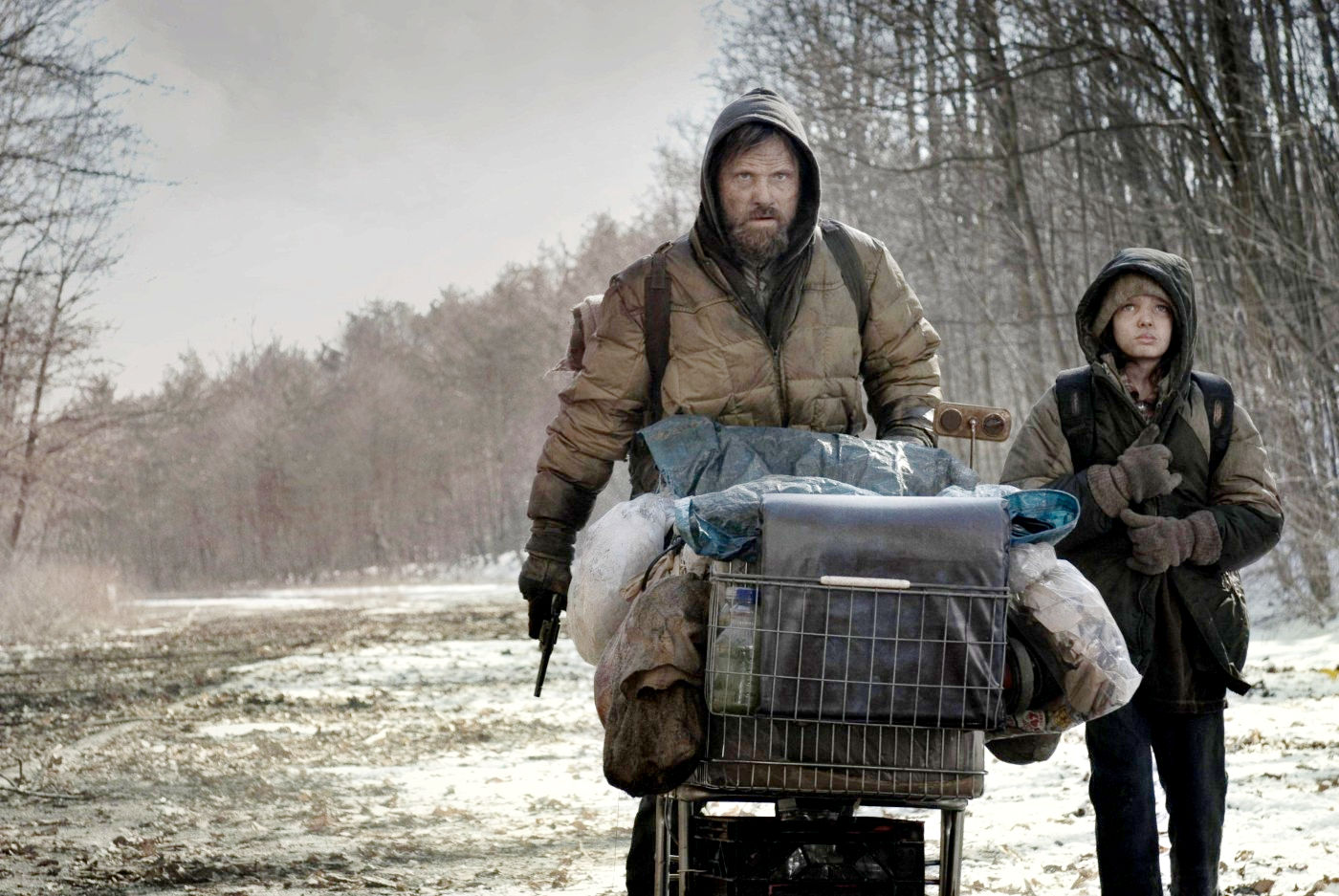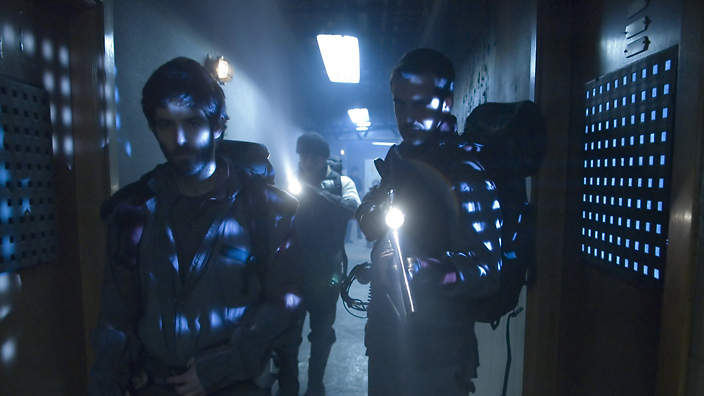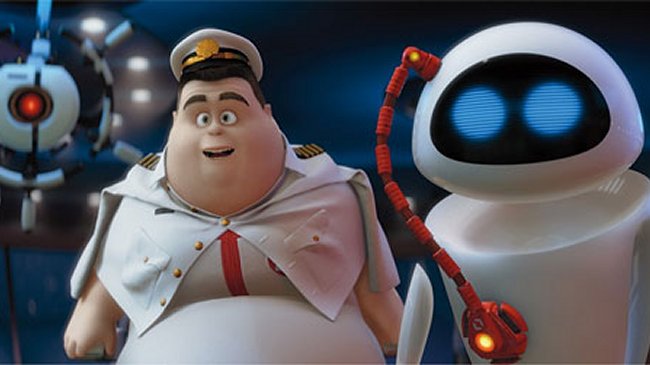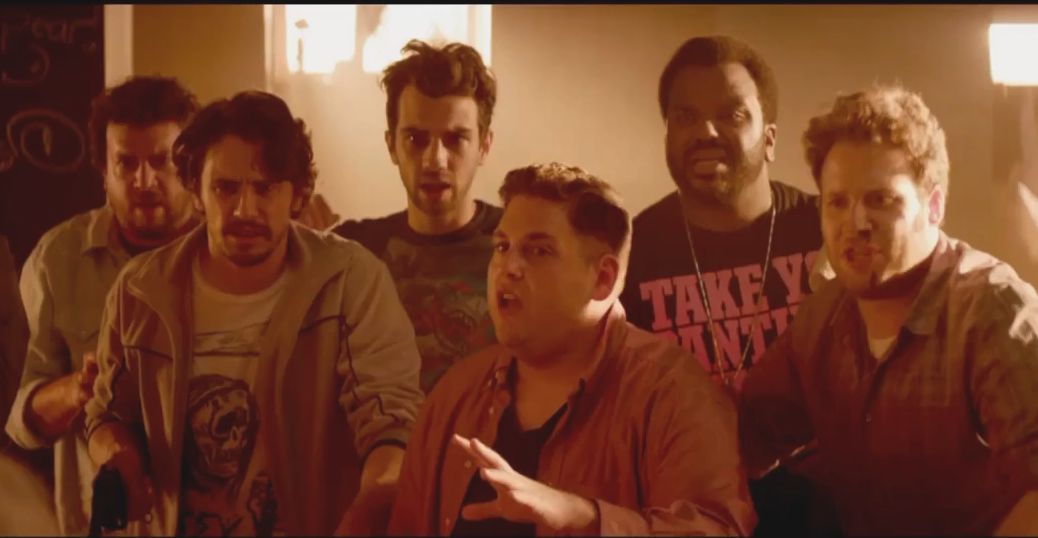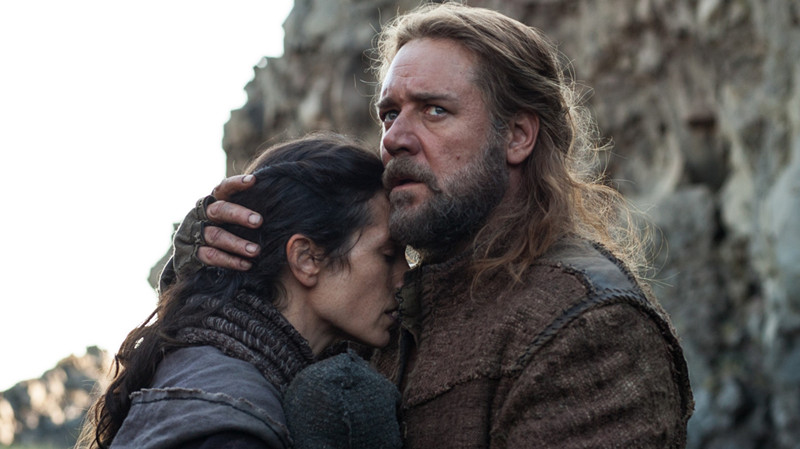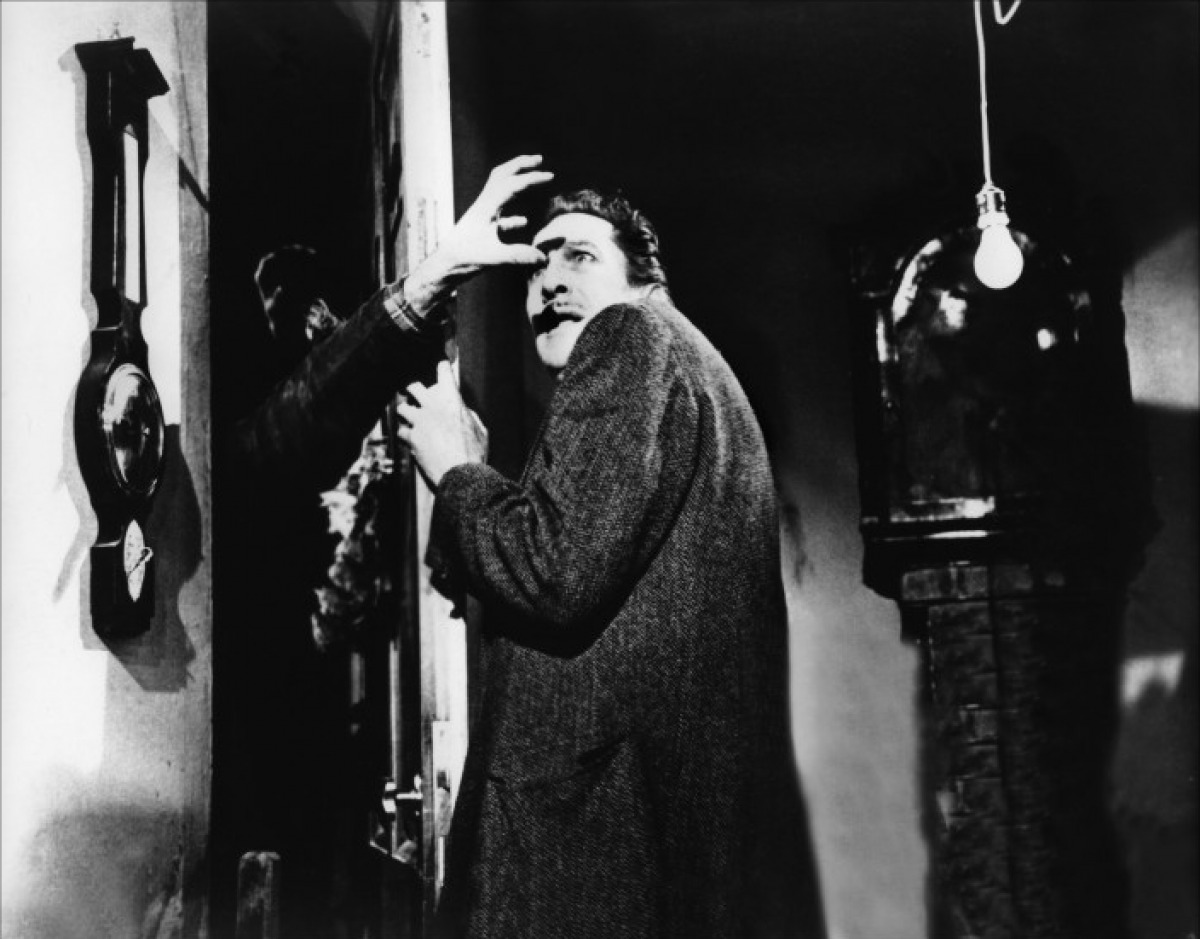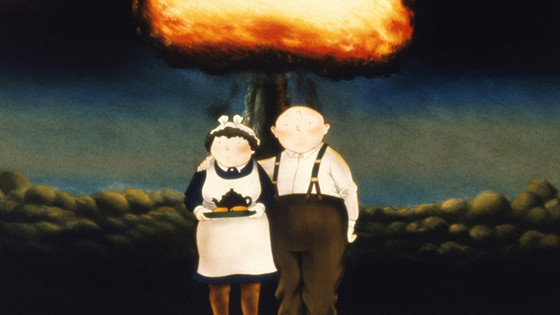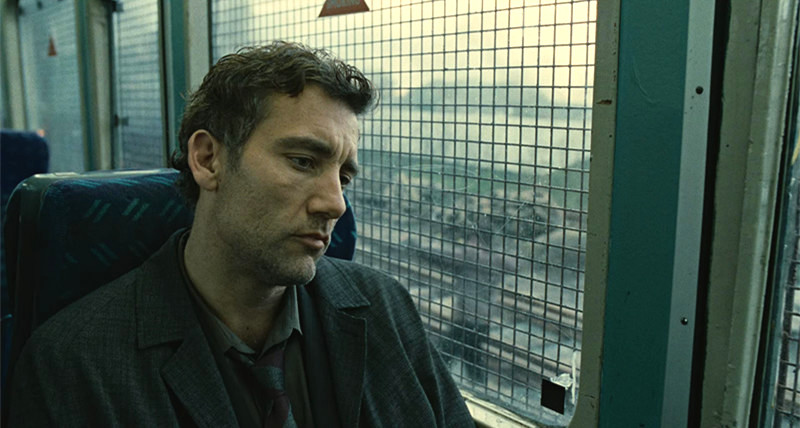8. The Road (John Hillcoat, 2009)
Based on Cormac McCarthy’s Pulitzer Prize winning classic of the same name, this film faithfully duplicates the emotional power of the film. The film is about post-apocalyptic wastelands of shattered civilization where cannibalism prevails (in absence of flora and fauna), and about a father-son duo that survives an epic journey. The haunting darkness of the novel was finely sustained, and there was shocking thoughtfulness in the performances making the film a real winner.
With a vision that is more novelistic than the novel itself, the film achieves a certain importance among adaptations of recent times. The film can certainly never replace its source as an experience, the latter being one of the most poetic works produced in America.
9. The Dark Hour (Elio Quiroga, 2007)
This Spanish science fiction is special for many reasons. It has elements of an emblematic mainstream post-apocalypse movie, but in the rather familiar, it setting launches dialogues and gestures of much higher metaphorical significance. An intelligent dissection of our spiritual bankruptcy in the face of a disaster, our competitive survival… is embedded in the scare of the movie.
The film has a largely ambiguous setting as the prime enigma. An unknown time after a nuclear holocaust, an unknown underground bunker is the film’s area of occurrence.
The film chills with effects delivered by supernatural monsters and ghosts, and the crumbly humanity falling prey one by one. The gradual claustrophobic exposition of irreversible destruction is the greatest achievement of this piece of craftsmanship. The film has a strikingly well-done lighting, almost making it a modern day Cabinet of Dr Caligari.
10. Wall-E (Andrew Stanton, 2008)
It was not the first example of fiction in which uninhabitable conditions on our planet forced humanity to depart on an interstellar Noah’s ark. But making it this insanely humane with no human protagonist, and this funny and universal was certainly unimaginable until this milestone was erected by the thoroughly original PIXAR.
Friendly robots are one thing. The cuteness had been over time condensed into formulas quite effectively. WALL E was adorable in new dimensions. With no dialogues and with a rusted crumbling metal body, this romantic and lonely machine became a cultural symbol in no time. The Earth had become saturated with waste, and no plant life survived.
WALL E was one of an army of intelligent trash compactors employed for cleaning the mess on the planet, while a chunk of humanity was away on the seemingly incessant voyage on a spaceship called the Axiom. Now long after all of humanity had vanished and all other cleaning robots expired, WALL E had the whole planet as his own engaged in his perfunctory cleaning while realizing some innocent joys.
A cute rendezvous with a sleek robot probe that happened to visit Earth would inspire his great space odyssey to the civilization floating in space, which would eventually lead the story to an optimistic note, which is absent in all other films on this list. Stunningly animated, and maturely written… WALL E has often been described as “2001: A Space Odessey starring the Little Tramp”.
11. This Is The End (Evan Goldberg & Seth Rogen, 2013)
This comedy may not be cited as immediately philosophical, but the honesty of its inquiry into the celebrity version of final hours makes it a very self-conscious dissection of human fame and its feeble nature. It is a parody film that trivializes the apocalyptic premise to an unimaginable extent. Despite all the desperate attempts made by the film to isolate itself from all serious consideration, it has to belong in this list of otherwise grave items.
A project that is creative at many levels, it unites Seth Rogen, James Franco, Emma Watson, Rihanna, Martin Starr, Craig Robinson, Jonah Hill, Danny McBride, Michael Cera, etc- all playing exaggerated versions of themselves.
The disaster dawns with the roller coaster ride of sheer hilarity, parodying every significant element of an apocalypse movie. The occasion of this celebration in the movie is a house warming party, which one can immediately associate with the philosophy that inspired films like Melancholia- personal beginnings in the final hours.
12. Noah (Darren Aronofsky, 2014)
Everyone knows the story, and everyone knows that this was not a bad apocalypse, because we’re back. It was just a celestial wash. This is Aronofsky’s least experimental work, structurally, but adapting a Biblical story that has been pampered in innumerable forms and making it memorable is indeed a challenge.
Aronofsky always had a fascination for themes of classical fantasy, and it is evident from his treatment that he was very inspired by the tale. It was largely original despite its source, and if it was not for certain independent choices, the film would not exist on this list. He chose to interpret it chiefly through the apocalyptic aspect, intimately drawing us close to character conflicts and creating a dialogue with the sinister civilization of that time that had to be cleansed.
The visual effects were very well executed, and a fine directorial ability is displayed. All performers are striking in their characters. The film had its share of bitter controversy.
While the philosophy of the film remains largely Biblical, a subtle narrative built around it tries to make the vision of the apocalypse, and human choices that revives civilization a convincing warning and advise in a current sense. “I think what Darren’s going for is a sense that it could be set in any time. It could be set sort of like a thousand years in the future or a thousand years in the past. … You shouldn’t be able to place it too much.” Emma Watson said about the film.
13. The Last Man on Earth (Ubalto Ragona & Sidney Salko, 1964)
A classic film that adapted Richard Matheson’s “I am Legend”; The Last Man on Earth is one of the most famous examples of post-apocalyptic films. The text has been, since then, adapted twice. This first effort had roped in Richard Matheson to write the screenplay. The consequence however was not satisfactory to the novelist and he chose to isolate himself from the adaptation by taking the credit under a pseudonym.
The film was set in Italy, and dealt with a cannibalistic apocalypse with a horror temper. The film was a pioneering work, and a “source” of many clichés that dissolved in the recipe since then, but as a film of its time, it remains a revolutionary vision. Vincent Price is often identified as the real winner in the film. There were very few works on vampires for reference at that point, and hence the imaginative capacity of both the film and the novel can simply not be missed.
The Last Man on Earth in this legend is a man who has retained sanity amidst the horrifying barbarism of shattered mankind. The title in itself is indicative of its claim to this genre. The story was quite an effort at philosophizing about the condition for its time, and the internal conflict of the survival has been highlighted with the compassion of a thoughtful artist.
14. When the Wind Blows (Jimmy Murakami, 1986)
It’s not often that a philosophical film is adapted from a graphic novel. But when the British film When the Wind Blows came up, one could almost see it as an animated version of Bela Tarr’s The Turin Horse with the apocalypse angle added for greater metaphorical exposition.
The theme can be considered the same- “The heaviness of human existence”. It is a film of a nuclear holocaust that is survived by a countryside couple, who receive a World War III with their own sanity informed by history and experience. Roger Waters contributed to the music of the film.
The painting was partly stop motion with real-life objects, and partly hand-drawn. This film too is a pessimistic insight into the nature of the Cold War. It explores other themes in dramatic effects. The depiction has a surreal energy largely because of the creative animation. The film gradually encompasses the human conditions of preparation, confrontation and submission… never quite dwelling on the aspect of resistance as in many films on this list.
15. Children of Men (Alfanso Cuaron, 2006)
Humanity is on the verge of extinction, and the worst part is that it is gradual. It is probably the most eventful film in the lot, though the aspect of the End of Humanity dealt with here is one just socio-political one, and no special effort is made to encompass every associated struggle.
Based on PD James’s novel of the same name, the story is about human populations drastically shrinking due to a male infertility that has lasted for decades and its social impacts. The basic conflict is the oppressive immigration laws imposed by the United Kingdom, where the last surviving government is, on the several asylum seeking refugees.
A prevailing socio-political condition is highlighting with the metaphor of endangered humanity. It is a story of a journey… with several subtle themes accumulating on the dense layers of the film, beautifully written. The film boasts of great cinematography, editing, and great acting. The realistically invoked chaos gives the film energy and a sympathetic capacity of an epic.
The film explores all efforts of resistance, perhaps rightly interpreting the gradual nature of this extinction. The film is an achievement of imaginatively and persuasively discussing a theme, an environment and a condition in an admirable unity. The hypothesis of PD James has shaped with great clarity, the politics of survival. The film does a rare justice to it.
Author Bio: Deepro became a film enthusiast over a gradual but extensive exposure to classic art house films, entirely assisted by the internet. When he is not busy with his academic life, he is either reading, writing, or watching films.
